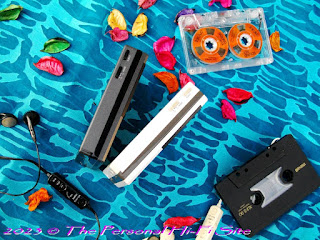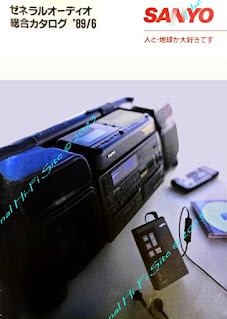National Jump RX-SA15
Radio Cassette Player with Equalizer

JUMP RX-SA15 Highlights:
● Equipped with a 5-band sensitive Graphic Equalizer.
You can enjoy free sound creation according to the music genre.
● TV (1~12ch) Sound and FM/AM Tuner.
TV band supports audio multiplexing, so it can be used outdoors in stereo. broadcast and bilingual can be easily enjoyed.
● 3-Way Auto-Reverse.
You can enjoy continuous play from side A to side B without turning over the tape.
● Direct port type stereo Headphones included.
By adopting a new method that separates the bass from the mid-high range and leads to a free sound field, it reproduces everything from low to high tones without difficulty.
In addition, the color is also available in a variety of colors that match the main body.
● Dolby NR built-in
● Metal/Chrome tape playback
● Anti-rolling mechanism adopted.
Headphone Stereo Cassette player RX-SA15 Standard price 33,000 yen
National General Catalogue October 1986
Few words about the JUMP RX-SA15
The RX-SA15 is one of the National's top-of-the-line players for 1986, among the RX-SA2 (only EQ), and RX-SA14 (Radio no EQ), it comes in three colors; Black, Red, and Green. Its weight is about 286g because its insides are mostly built from metal without sparing or cutting corners - quality first. It has most of the features that were available at the time of the issue; like TV reception, 3-Way Auto-Reverse, and 5-Band Graphic Equalizer. It even has a nice style with a matching set of Earphones available in a variety of colors that match the main body.
About Sound
Whether it be by color or by sound, according to National the earphones were designed with a unique method specifically for these top-of-the-line players; "By adopting a new method that separates the bass from the mid-to-high range and leads to a free sound field, it reproduces everything from low to high tones without difficulty". (from National's original catalog). The RX-SA15 has a few other points that make him sound way better than other players in its class, for example, for a headphone Stereo it has a wide Frequency Response between 40Hz to 15,000Hz (for Normal/CrO2/Metal), a high output Amplifier with 10mW per channel, and also has a sensitive EQ so you can precisely adjust the tone of every Frequency Band as you like, the results put out a quite warming sound with an excellent music presence whether the Dolby NR is on or off.

Built and design
Although The RX-SA has some design flaws, for instance, the Volume wheel is too close to the headphone socket which can cause a very common malfunction (like with all brands and make) where the socket breaks from within due to accidental pressure, and it also can break the earphones plug at the same time. also, it is not easy to exchange a cassette, it does not always fit right into the door. although the buttons are kind of small they feel just right to operate the unit, on the other hand, the EQ sliders are big and comfortable to use.
The inside build is excellent, it looks like they build it to last further into the future with fine parts. it even has accessible fine tunning options like; speed adjustment, Gain Adjustment, Azimuth adjustment, etc. if you look on the PCB board you'll notice that everything is marked down so you'll know your way around in case no technician is around to fix it!! The RX-SA15 was built with details in mind and there are many other small things included in it, however, I will not mention them all here, im leaving them to you to explore...

So, do we have a winner here?
I Like the RX-SA15 it has everything to like about it in such a player, it feels good in your palm, it has good relation between plastic and metal build, and on top of all it does sound very good to my ears, therefore, I highly recommend this player for everyday listening and its a must for collectors to have a reference and also to know what is a winner do sounds like! Cheers, TheLion.
Specifications:
Tuner Receiving frequency:
TV 4~12ch 175~222 MHz
FM/TV 1~3ch 76~108MHz,
AM 525~1,605KHz
Track system: Stereo
Frequency range:
Normal/CrO2/Metal: 40 ~ 15,000Hz (EIAJ)
Practical maximum output: 10mW +10mW (EIAJ /DC)
Battery duration: about 3 hours (EIAJ music playback, output 1mW)
When using UM-4, about 6.5 hours (same) When using AM4
Power supply: DC 3V (AAA batteries x 2)
AC adapter: (RP-AC3 sold separately),
car battery (using RP-993 sold separately and plug adapter RP-PA99)
Maximum dimensions: 80.9 (width) x 113.8 (height) x 30 (depth) (EIAJ) mm
Dimensions: 78.5 ( Width) x 112 (height) x 27.1 (depth) mm
Weight: Approx. 268g (including batteries)
Accessories: Batteries, stereo earphones, carrying case
Color: -R red, -K black,-G green
Packaging

Thank you for Visiting
The Personal Hi-Fi Site © 2023 All rights reserved
Please feel free to comment below


















































